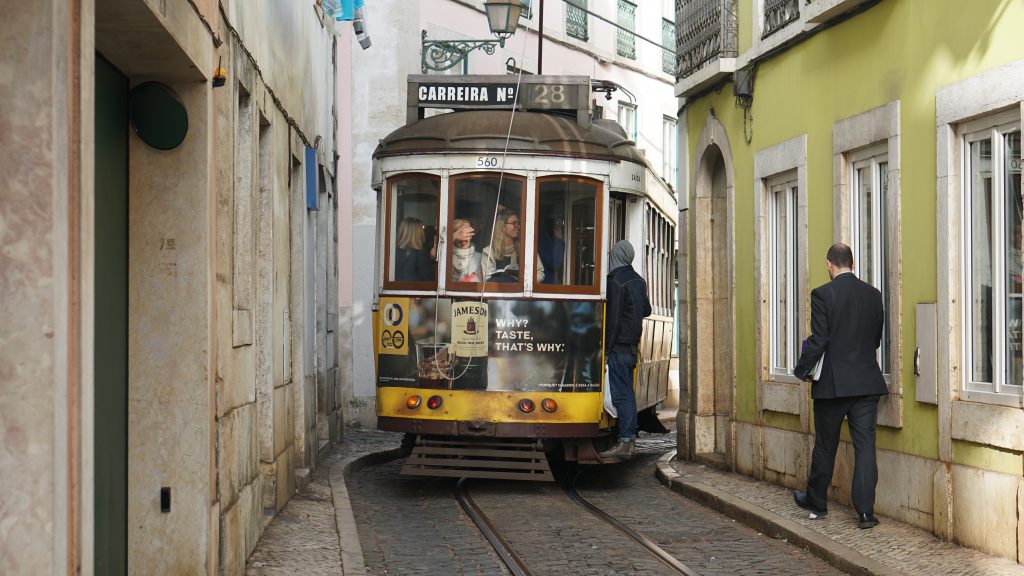Lisbon was the second stop of our Portugal trip and we instantly noticed the big city feel compared to the far more quaint Porto. Lisbon, like Porto, is a coastal city bursting with culture and with seemingly endless things to see and do (and eat!!). You could easily spend a full week here. We just had 3 days so this was a city which we marked down to return to at a later date.
What surprised us was how busy the city was – we were there supposedly there during one of the quieter tourist winter months. We ended up spending a lot of time in traffic and probably bemoaned the fact that we should have acquainted ourselves more with the city’s excellent metro network! We were perhaps a shade unlucky as there were a number of big events in town including the annual and very popular El Corte IInglés São Silvestre de Lisboa 10km running event which immediately drew Geoffrey’s interest.
A good place to start is to take the famous Lisbon 28 tram which connects Martim Moniz with Campo Ourique, and passes through the popular tourist districts of Graca, Alfama, Baixa and Estrela. This is the classic Lisbon tram journey – riding in a quaint yellow tram as it screeches and rattles through the sometimes impossibly, narrow streets of the city. The trams are delightful – dating from the 1930’s – yet they are still an integral part of Lisbon’s transport network.
A highlight was the ferry across the River Tejo and the bus to the Cristo Rei – Lisbon’s Statue of Christ. Inspired by Rio de Janeiro’s famous Christ the Redeemer statue, the 110m-high Cristo Rei was erected in 1959 and the views across to the city are stunning.
We also did a day trip to Sintra – probably one of the most popular day trips in Portugal. However be warned – getting there by train from Lisbon was easy – but the crowds and congestion once there overwhelmed us. Just getting to the main attractions was a mission and the queues for the palaces were so long that we preferred to spend our time wandering the fabulous grounds. There was a particular highlight though – the 403 bus to Cabo da Roca. Cabo da Roca is a wild and rugged headland that marks the most westerly point of mainland Europe. The spectacular, desolate scenery adds to the allure of the location and it was a welcome respite from the crowds.
There is an endless variety of exquisite Portuguese cuisine to sample. There pastries are famous – especially the custard tarts – Pastel de natas. We also stumbled upon an extremely popular seafood restaurant called Ramiro. The menu is all fresh pure seafood with bread & butter being the only side – nothing else! If you’re into fresh clams, shrimps, prawns and crab this place is definitely for you.
If you would like more information about this destination please do not hesitate to contact me.

